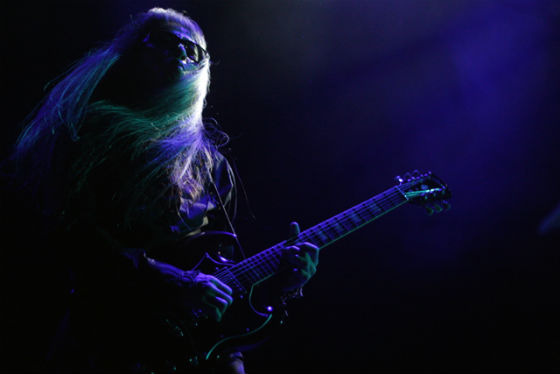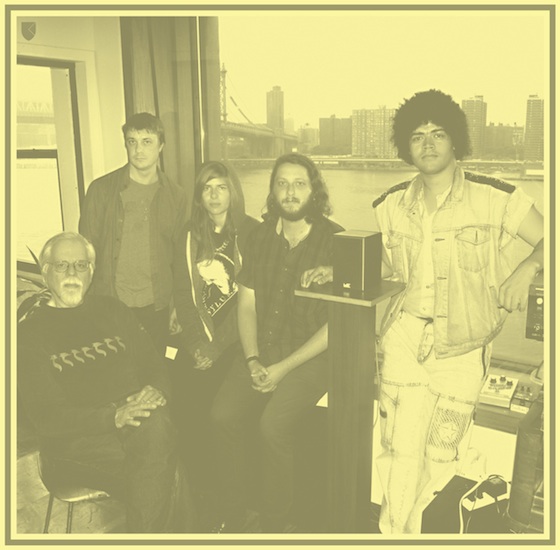MK Velsorf & Aase Nielsen – Gloomed-up Gala
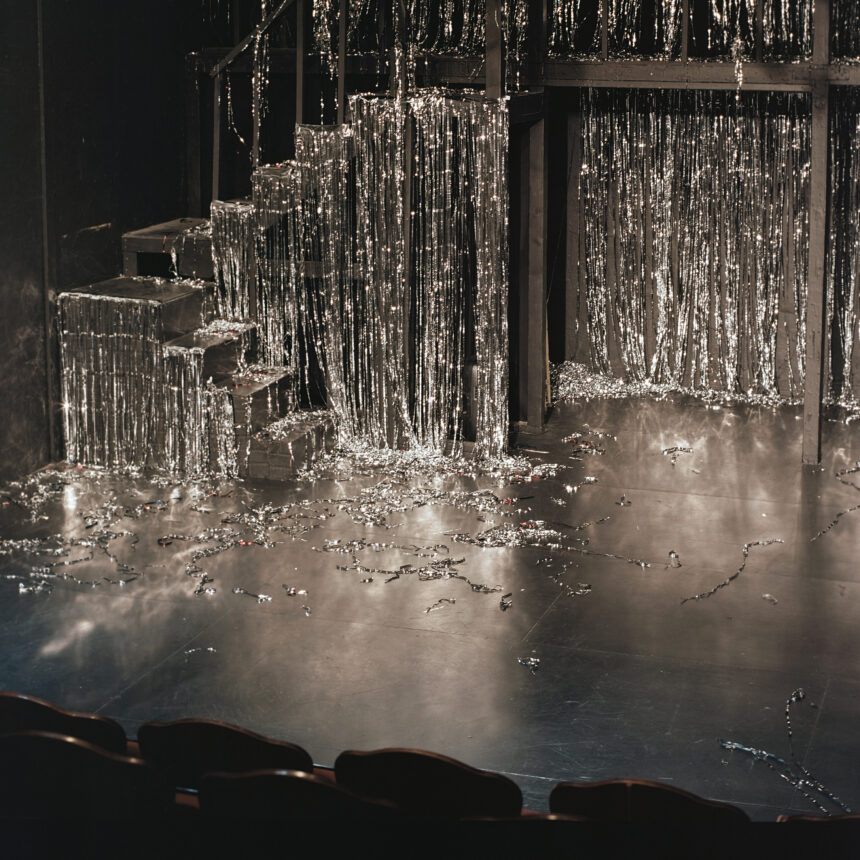
MK Velsorf & Aase Nielsen – “Opening Night” (Awe, 2025) – review by Juliette Thouin. Pictures by MK Velsorf and Aase Nielsen.
This February, the Danes MK Velsorf and Aase Nielsen released their first collaborative project Opening Night on American DJ and producer Laurel Halo’s label Awe. Velsorf, a composer, guitarist, and one third of TLF Trio, and Aase Nielsen, a musician, producer and composer behind the subversive folk-classical group boli group, are both known for rooting their work in the processes of de-composition. With Opening Night, they make this approach explicit—its presence, like the duo’s, is volatile, dissolving into the background.
Recorded during the intermissions of the inauguration night of the New Theater Hollywood in L.A., the duo played the role of house band for “A NIGHT OF SPEECHES” – “a deconstructed gala”, as the venue described it. The release follows Halo’s own release on the label, her acclaimed album Atlas, in which the dissonance of tones similarly quashed the bareness of the compositions, making the music feel haunted by its own (dis)appearance.
Opening Night is gloomy, loopy, and strangely detached. Ominous grooves thrust each lick again and again, slowly and towards nowhere. Each track seems scarcely manufactured in a Dean Blunt-esque melancholy, where repeated and kitsch earworms emerge from a guitar, a synth, and backing track. Together with the recorded theater chatter, Opening Night evokes an eerie and dissociated monotony through disquieting loops. Both tone and sonic aesthetic seem strangely adverse to an opening night and to the expected grandeur of a gala. Slow, gritty, repetitive and filled with ambivalent premonition, Opening Night brings you right there into an uncomfortable present – something is lurking under the bareness of the compositions and performance.
“Every note plucked by Velsorf and Nielsen lingers unsettlingly into the shadows, slowly dissolving into the reverb.”
The soundtrack to the gloomed-up gala seems to reject and clutch onto the tropes Hollywood has spread, copy-pasting the kitsch imagery of American TV showbiz as both pastiche and parody. You can hear it in the patterned motifs of each song, they all seem familiar – not least because they sometimes repeat for almost a quarter of an hour – but because it feels like you’ve definitely heard something like this before.
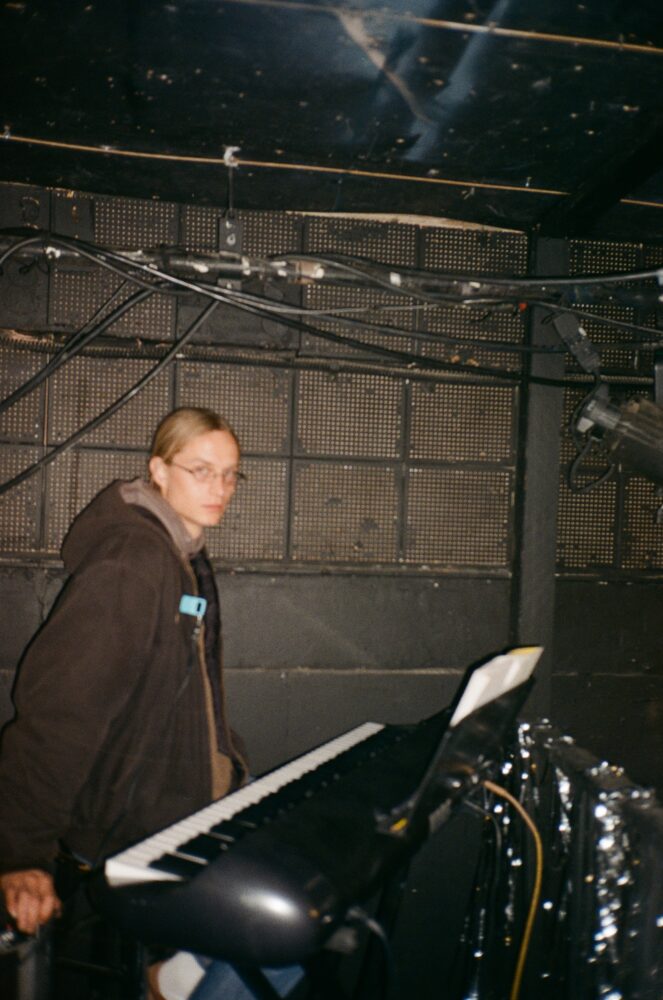
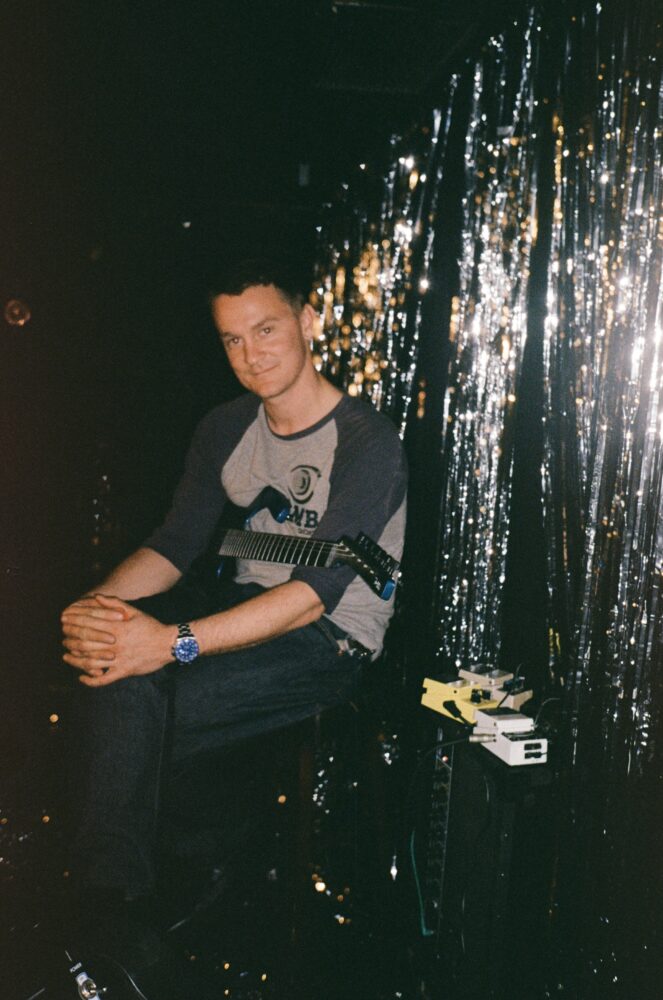
To me, this strangeness feels like trying to make sense of a fuzzy memory – like a rough and blurry image of American TV shows from the late 20th century that I never even watched. Listening to the track “Santa Monica”, I see slightly opened Hawaiian shirts, aviator glasses, moustaches, palm trees and a purple sunset, as a soft bossa beat pulses the twangy exchanges of the guitar riffs. Similarly, for about fourteen minutes, “Vine” creeps gently up the spine like a distorted soundtrack of a dreary detective show. Every note plucked by Velsorf and Nielsen lingers unsettlingly into the shadows, slowly dissolving into the reverb.
“(…) their music fills the in-between spaces, the intermissions, and even the dress rehearsals, where ‘nothing’ really happens.”
Through Opening Night, kitsch becomes uncanny and artifice creates dissonance. Yet, this artifice makes for a broader commentary on performing arts. MK Velsorf and Aase Nielsen have turned themselves quite literally and intentionally into the furnishings of the event – their music fills the in-between spaces, the intermissions, and even the dress rehearsals, where ‘nothing’ really happens.
On the title track, the mic is equally shared between the gritty composition and the chatter of the audience. Still, an unspoken gap remains between the performers and the crowd. High up on the stage balcony and separated from the crowd below, fulfill their role as furniture music, as props that ease the audience’s waiting time, going unnoticed and being practically nonexistent. Yet, the release of the live interlude raises Velsorf and Nielsen’s adherence to Erik Satie’s furniture music as they reveal the cosplaying of their roles as performers, exposing the artifice. However, in a submissive ruse, the duo resist the course of the background-isation of music, amplifying instead its unsettling resonance and meanings by drawing it out from the veiled balcony.
Upon listening to Opening Night, I wondered how much of this release was decided retrospectively, and how the meaning changes outside of the theater. How was the audience feeling while listening to the live instrumental? The way the sparse guitar, violin and piano loops and backing tracks dis-coordinate makes you aware of the time lost in these in-between spaces. Yet, some spaces are meant to pass slowly, whether it’s the interlude between two performances or a quiet drive. In those moments, there’s no choice but to wait, and oddly, it feels safe.
But outside those boundaries, a palpable sense of apprehension lingers. To me, the album’s sparsity and elusive familiarity felt too anxious. Outside the confines of theatre, the music’s meaning can splinter into too many directions. Tracks like “House in the Hill” sit more difficulty after the fires that hit L.A. at the beginning of the year, as the daunting and low organ synths echo far into an empty landscape that activates through recordings of crickets. This anxiety heightens with the closing track “Sunset” whose strident synths pierce through a softly blazing atmosphere. Opening Night fuels a waiting room passivity, feeling at times like an elevator room for the end of (our) world.
Info: “Opening Night” is out via Awe.

